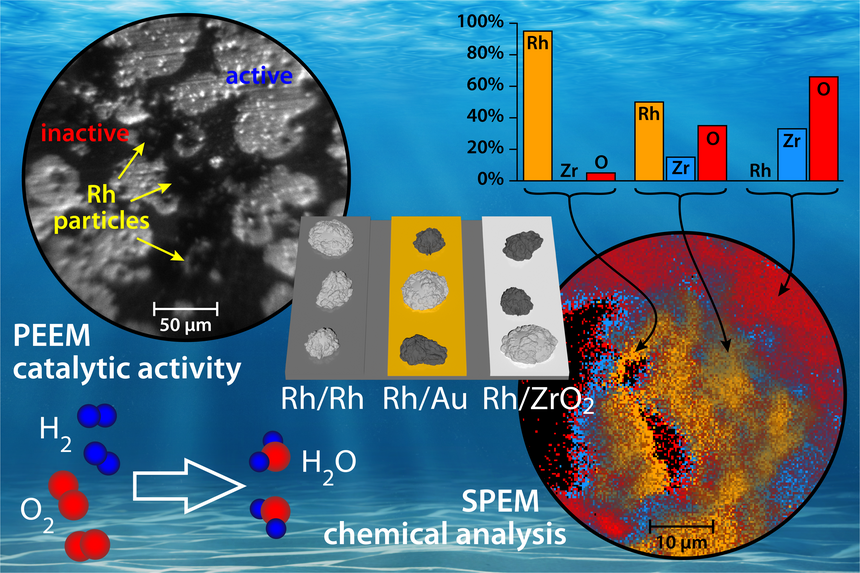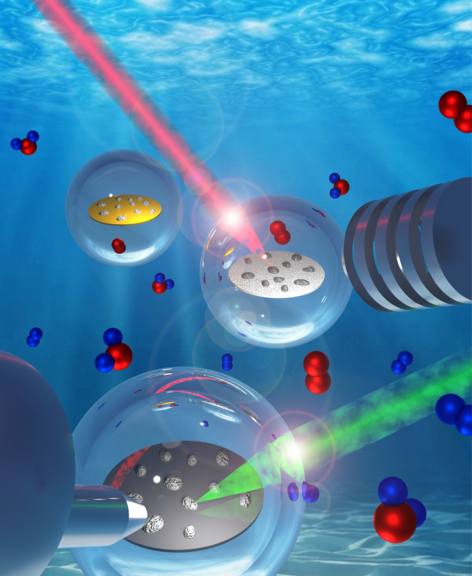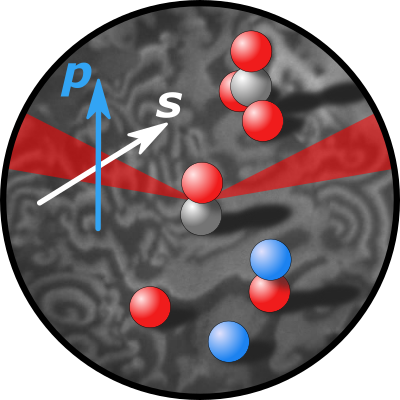Published in ACS Catalysis and was featured on the cover
The catalytic behavior of Rh particles supported by three different materials (Rh, Au, and ZrO2) in H2 oxidation has been studied in situ by correlative photoemission electron microscopy (PEEM) and scanning photoemission electron microscopy (SPEM). Kinetic transitions between the inactive and active steady states were monitored, and self-sustaining oscillations on supported Rh particles were observed. Catalytic performance differed depending on the support and Rh particle size. Oscillations varied from particle size-independent (Rh/Rh) via size-dependent (Rh/ZrO2) to fully inhibited (Rh/Au). For Rh/Au, the formation of a surface alloy induced such effects, whereas for Rh/ZrO2, the formation of substoichiometric Zr oxides on the Rh surface, enhanced oxygen bonding, Rh-oxidation, and hydrogen spillover onto the ZrO2 support were held responsible. The experimental observations were complemented by micro-kinetic simulations, based on variations of hydrogen adsorption and oxygen binding. The results demonstrate how correlative in situ surface microscopy enables linking of the local structure, composition, and catalytic performance.
The full article can be found here.
Authors:
Philipp Winkler, Maximilian Raab, Johannes Zeininger, Lea M. Rois, Yuri Suchorski, Michael Stöger-Pollach, Matteo Amati, Rahul Parmar, Luca Gregoratti, and Günther Rupprechter
Subprojects:
P08 – Catalysis by ultrathin LaBO3 (B=Co, Fe) perovskite films



